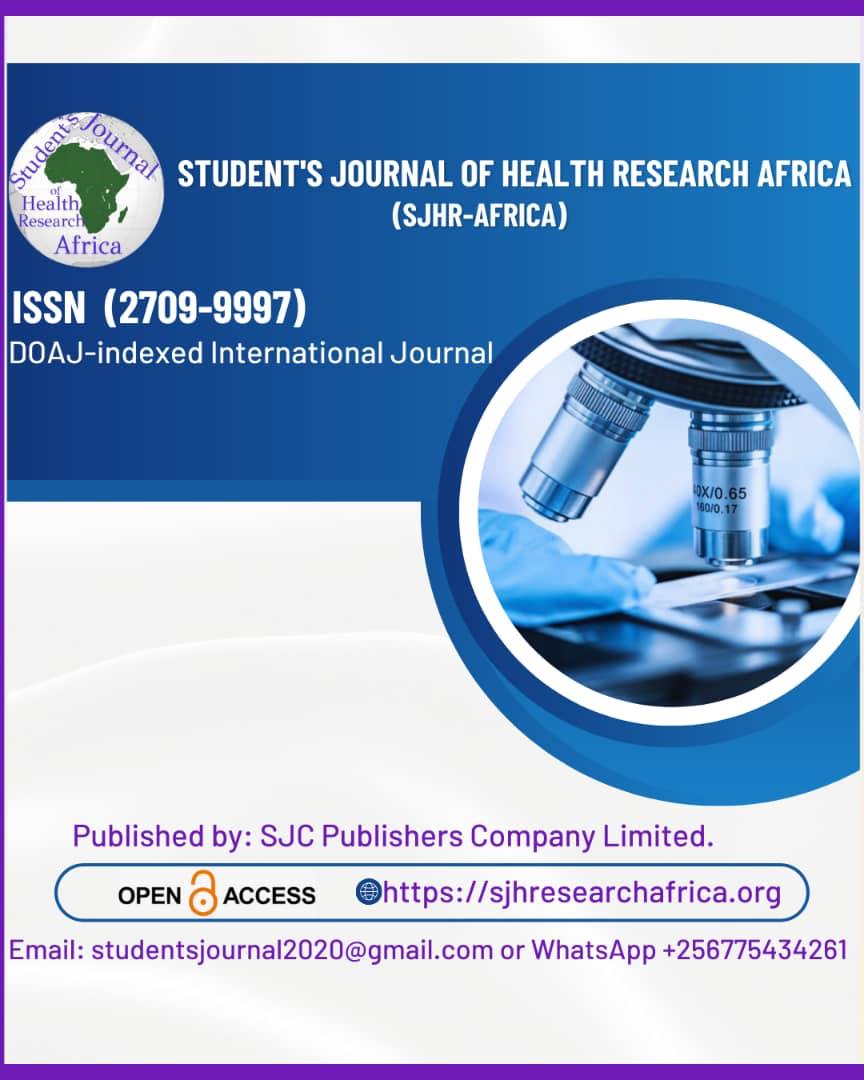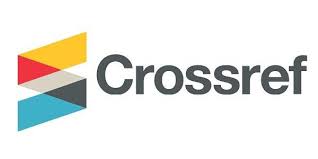Comparison of the gradient diffusion technique for fluconazole and voriconazole with the VITEK 2 yeast susceptibility system for clinical breakpoints of candida tropicalis isolated from clinical samples.
DOI:
https://doi.org/10.51168/sjhrafrica.v6i6.1863Keywords:
Antifungal sensitivity testing, Fluconazole, Broth micro dilution, Minimum inhibitory concentrations, Voriconazole, VITEK 2Abstract
Background
Modern health care advances in immunosuppressive therapy, particularly related to bone marrow transplantation, and increasing utilization of implantable devices have contributed to the rise of invasive Candida infections in recent decades.
Objectives: An automated method based on the broth microdilution MIC technique was used to evaluate the susceptibility of fluconazole and voriconazole with that of the Gradient diffusion technique using brain heart infusion (BHI) agar. Additionally, to identify a low-cost, quick, accurate, and simple way to test for antifungal sensitivity.
Materials and Methods
Over a year, an observational study was conducted from November 2023 to October 2024. The study was carried out at the Department of Microbiology at the Indira Gandhi Institute of Medical Sciences (IGIMS), Patna, Bihar, India. The study included 120 participants in total.
Results
Out of 120 isolates of Candida species, a total of 40 isolates were found to be of Candida tropicalis. Most of the isolates were confirmed in blood samples 24 (60%), followed by deep aspirated pus 06 (15%), pleural fluid 05 (12.5%), CSF 03 (7.5%), and peritoneal fluid 02 (5%). Candida tropicalis isolates were sensitive to fluconazole in 37 (92.5%) of the species as well as to voriconazole in 39 (97.5%) of the species through Vitek 2 tests.
Conclusion
A standardized automated test for antifungal susceptibility, the AST-YS08Vitek 2 card system (bioMérieux), was shown to be dependable and produced findings that were comparable to the E test; as a result, it may be used in place of the E test.
Recommendations
Nevertheless, additional research is required to assess the VITEK 2 method's capacity to detect resistant isolates. Retesting of any resistant isolates generating inconsistent findings will be necessary to resolve this problem.
References
Pappas PG, Kauffman CA, Andes D, Benjamin Jr DK, Calandra TF, Edwards Jr JE, Filler SG, Fisher JF, Kullberg BJ, Ostrosky-Zeichner L, Reboli AC. Guías de práctica clínica para el manejo de la candidiasis: actualización del 2009, de la Infectious Diseases Society of America. Clinical Infectious Diseases. 2009 Mar 1;48(5):503-37. https://doi.org/10.1086/598961
Pfaller MA, Diekema D. Epidemiology of invasive candidiasis: a persistent public health problem. Clinical microbiology reviews. 2007 Jan;20(1):133-63.https://doi.org/10.1128/CMR.00029-06 PMid:17223626 PMCid:PMC1797637
Hidron AI, Edwards JR, Patel J, Horan TC, Sievert DM, Pollock DA, Fridkin SK. Antimicrobial-resistant pathogens associated with healthcare-associated infections: annual summary of data reported to the National Healthcare Safety Network at the Centers for Disease Control and Prevention, 2006-2007. Infection Control & Hospital Epidemiology. 2008 Nov;29(11):996-1011. https://doi.org/10.1086/591861 PMid:18947320
Weinstein RA, Fridkin SK. The changing face of fungal infections in health care settings. Clinical Infectious Diseases. 2005 Nov 15;41(10):1455-60. https://doi.org/10.1086/497138 PMid:16231257
Pappas PG, Rex JH, Lee J, Hamill RJ, Larsen RA, Powderly W, Kauffman CA, Hyslop N, Mangino JE, Chapman S, Horowitz HW. A prospective observational study of candidemia: epidemiology, therapy, and influences on mortality in hospitalized adult and pediatric patients. Clinical Infectious Diseases. 2003 Sep 1;37(5):634-43. https://doi.org/10.1086/376906 PMid:12942393
Rex JH, Pfaller MA, Galgiani JN, Bartlett MS, Espinel-Ingroff A, Ghannoum MA, Lancaster M, Odds FC, Rinaldi MG, Walsh TJ, Barry AL. Development of interpretive breakpoints for antifungal susceptibility testing: conceptual framework and analysis of in vitro-in vivo correlation data for fluconazole, itraconazole, and Candida infections. Clinical Infectious Diseases. 1997 Feb 1;24(2):235-47. https://doi.org/10.1093/clinids/24.2.235 PMid:9114154
Grant SM, Clissold SP. Fluconazole: a review of its pharmacodynamic and pharmacokinetic properties, and therapeutic potential in superficial and systemic mycoses. Drugs. 1990 Jun;39:877-916. https://doi.org/10.2165/00003495-199039060-00006 PMid:2196167
Florea NR, Kuti JL, Quintiliani R. Focus on... Voriconazole: A novel azole antifungal. Formulary. 2002 Aug 1;37(8).
Melhem MS, Bertoletti A, Lucca HR, Silva RB, Meneghin FA, Szeszs MW. Use of the VITEK 2 system to identify and test the antifungal susceptibility of clinically relevant yeast species. Brazilian Journal of Microbiology. 2013;44:1257-66. https://doi.org/10.1590/S1517-83822014005000018 PMid:24688520 PMCid:PMC3958196
Song YB, Suh MK, Ha GY, Kim H. Antifungal susceptibility testing with etest for Candida species isolated from patients with oral candidiasis. Annals of dermatology. 2015 Dec 7;27(6):715. https://doi.org/10.5021/ad.2015.27.6.715 PMid:26719641 PMCid:PMC4695424
Posteraro B, Martucci R, La Sorda M, Fiori B, Sanglard D, De Carolis E, Florio AR, Fadda G, Sanguinetti M. Reliability of the Vitek 2 yeast susceptibility test for detection of in vitro resistance to fluconazole and voriconazole in clinical isolates of Candida albicans and Candida glabrata. Journal of Clinical Microbiology. 2009 Jun;47(6):1927-30. https://doi.org/10.1128/JCM.02070-08 PMid:19403774 PMCid:PMC2691097
Shah DN, Yau R, Weston J, Lasco TM, Salazar M, Palmer HR, Garey KW. Evaluation of antifungal therapy in patients with candidaemia based on susceptibility testing results: implications for antimicrobial stewardship programmes. Journal of Antimicrobial Chemotherapy. 2011 Sep 1;66(9):2146-51. https://doi.org/10.1093/jac/dkr244 PMid:21700622
Pfaller MA, Castanheira M, Diekema DJ, Messer SA, Jones RN. Triazole and echinocandin MIC distributions with epidemiological cutoff values for differentiation of wild-type strains from non-wild-type strains of six uncommon species of Candida. Journal of Clinical Microbiology. 2011 Nov;49(11):3800-4. https://doi.org/10.1128/JCM.05047-11 PMid:21900519 PMCid:PMC3209078
Pfaller MA, Diekema D. Progress in antifungal susceptibility testing of Candida spp. by use of Clinical and Laboratory Standards Institute broth microdilution methods, 2010 to 2012. Journal of Clinical Microbiology. 2012 Sep;50(9):2846-56. https://doi.org/10.1128/JCM.00937-12 PMid:22740712 PMCid:PMC3421803
Downloads
Published
How to Cite
Issue
Section
License
Copyright (c) 2025 Kamlesh Rajpal, Namrata Kumari, Shailesh Kumar, Rakesh Kumar, Kumar Saurabh, Randhir Kumar

This work is licensed under a Creative Commons Attribution-NonCommercial-NoDerivatives 4.0 International License.






















